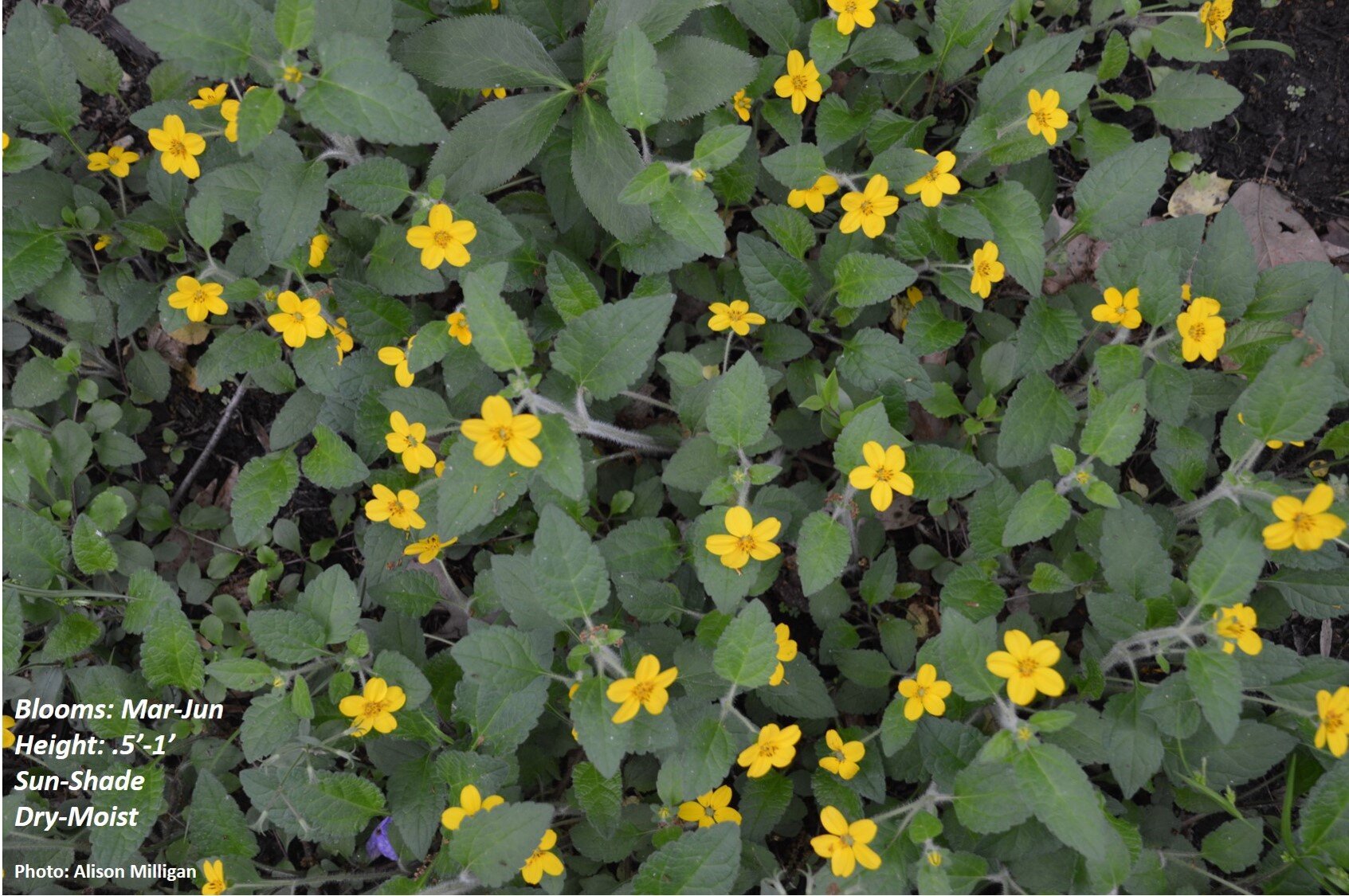March’s Native Maryland Plant
Chrysogonum virginianum L.
(kris-OG-oh-num ver-jin-ee-AY-num)
Common Name: Green and Gold
As I look out at my garden in March it’s not surprising that I see plenty of bare soil, the ground is just beginning to warm and most plants are still dormant. The evergreen ferns are covering some shady places, and the Virginia bluebells (Mertensia virginica) will be showing their heads any minute, but in many areas I’m aware that no plants will be emerging - I still need to plant, and a lot! There are places in my yard, and probably yours, where runoff and erosion occur, and those areas are prime locations for native, densely planted groundcovers.
Low-growing and generally easy spreaders, groundcovers are useful on slopes, under trees, and in areas where weed suppression is needed; many of them will flower and some are evergreen. Chrysogonum virginianum is one such plant – it’s a rhizomatic, flowering, easy to find groundcover that keeps its foliage in mild winters.
I have Chrysogonum spp. planted densely under trees and amongst various shrubs, including the now berryless Winterberry (Ilex verticillata). Its star-shaped, 5-petaled yellow flower lights up these areas in spring and summer and the nectar and pollen it produces attracts a variety of pollinators. I find that it takes light foot traffic and blooms longer in moister areas, so I’ll be adding it to a part-shade walking path along my dry riverbed.
As you look out at your garden and prepare for spring rains, you’ll be well rewarded if you plant this useful groundcover where there is bare soil with good drainage. You’ll also be protecting our rivers while increasing biodiversity in your landscape.
Stay tuned – next month we’ll discuss the host plant for the Spring Azure butterfly!
~ Alison Milligan – Mstr. Gardener/Mstr. Naturalist/Mstr. Watershed Steward
Chesapeake Bay Landscape Professional (CBLP)



